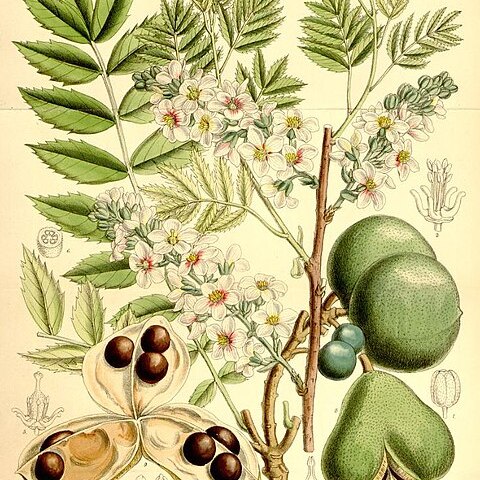Shrubs or small trees, deciduous, 2-5 m tall. Branches brownish red, strong, stout, glabrous; terminal buds and lateral buds with imbricate scales. Leaves with petiole 15-30 cm; leaflets 4-8-jugate, abaxially green when fresh, adaxially deep green, lanceolate or subovate, bilaterally slightly asymmetrical, 2.5-6 × 1.2-2 cm, membranous or papery, abaxially tomentose and fascicled stellate when young, adaxially glabrous or sparsely hairy on midvein, lateral veins slender, slightly prominent on both sides, base cuneate, apex acuminate, margin sharply serrate; terminal leaflet usually deeply 3-lobed. Inflorescences terminal, male ones axillary, erect, 12-20 cm; peduncle short, often with rudimentary scales at base. Pedicels 1.2-2 cm; bracts 0.5-1 cm. Sepals 6-7 mm, grayish tomentose. Petals white, purplish red or yellow at base, ca. 2 × 0.7-1 cm, with evident veins, claw ciliate on both sides; hornlike appendage on disk orange, 4-5 mm. Stamens ca. 1.5 cm; filaments glabrous. Ovary grayish tomentose. Capsules black, shiny, ca. 1.8 cm. Fl. spring, fr. early autumn. 2n = 30.
More
A small tree. It grows 8 m high. The bark is grey-brown and cracks into scaly ridges. It loses its leaves during the year. The leaves have leaflets along the stalk. The leaves are 30 cm long with up to 17 leaflets. These are narrowly oval and have teeth. The leaflets are 6 cm long and glossy green above. The flowers are white and have 5 petals. They are yellow to red at their bases. The fruit is a smooth thick-walled capsule. It is 6 cm across. It contains several pea sized seeds. The fruit are edible.

